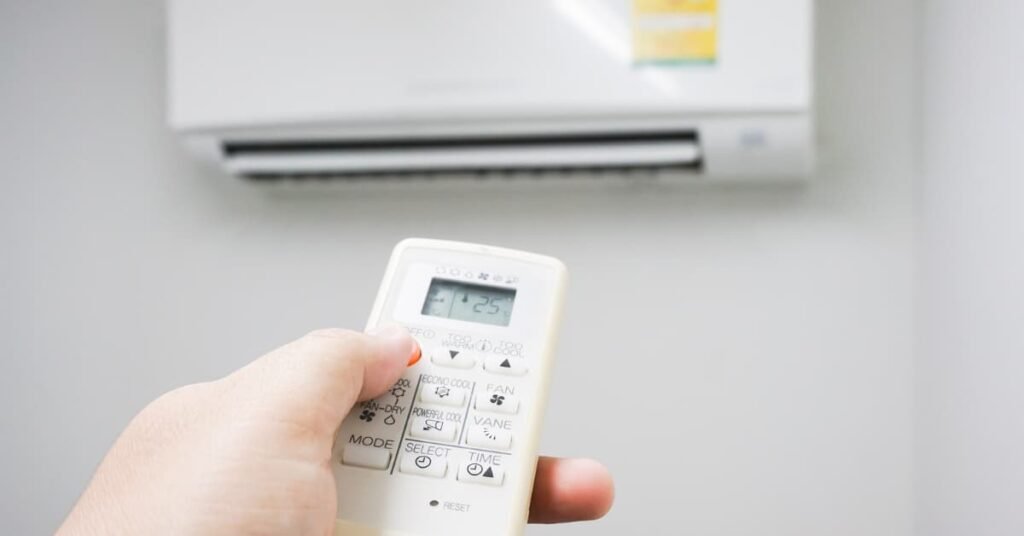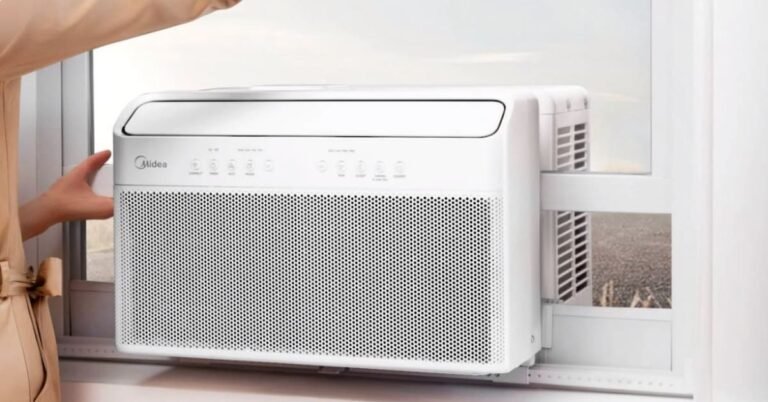What is Vent Mode in Air Conditioner? Details Guide
Vent mode in an air conditioner circulates fresh air from outside into the room. It does not cool the air but refreshes the indoor atmosphere.
Air conditioners serve various functions to maintain indoor comfort, and vent mode is a feature often overlooked but essential for indoor air quality.
Unlike the cooling or heating modes, vent mode focuses on ventilation. Helping to reduce indoor pollutants and maintain a flow of fresh air without significantly altering the temperature.
How Vent Mode Works?
Exploring vent mode on your air conditioner unveils an important feature in climate control. This setting does more than just cool or heat your space. It offers a unique function tailored to enhance indoor air quality and comfort.
Let’s dive into how vent mode operates to maintain a fresh and pleasant indoor atmosphere.

Air Circulation
The primary function of vent mode is to keep air moving. In this setting, the air conditioner pulls air from outside your home and circulates it inside. This introduces fresh air, important for maintaining a healthy indoor environment.
The process can work in several ways:
- Exchanges stale indoor air with fresh outdoor air.
- Reduces pollutant levels indoors.
- Helps eliminate odors by constant air movement.
Temperature Regulation
In vent mode, the air conditioner doesn’t drastically change the temperature. Instead, it focuses on moderating indoor climate using outside air.
Key points include:
| Feature | Function |
| Mild Cooling | Blows in cooler outdoor air on a hot day. |
| Heat Relief | Removes excess indoor warmth by introducing cooler external air. |
| Energy Efficiency | Saves energy as the AC unit uses less power to modulate temperature. |
Vent mode is smart for days when outside conditions are close to your ideal room temperature. It brings in a natural, gentle breeze and maintains comfort without using intensive heating or cooling operations.

Benefits Of Using Vent Mode
When you flick on the vent mode in your air conditioner, it’s not just about cooling your space. Vent mode offers a range of positive impacts, inviting fresh air in and promoting a more comfortable and eco-friendly environment.
Let’s dive into the specific advantages this feature provides.
Improved Air Quality
Fresh air streams into the living area as the vent mode opens a passage for outside air. This natural ventilation helps in diluting accumulated indoor pollutants like dust, odor, or smoke, resulting in a fresher room atmosphere:
- Circulates outdoor air – replaces stuffy air with a fresh breeze
- Reduces indoor pollutants – lessens the concentration of harmful particles
- Minimizes allergens – decreases the presence of common allergens
Reduced Energy Consumption
Using vent mode can lead to lower utility bills. By allowing outside air to cool your space naturally, it reduces dependency on the AC’s compressor. This shift in operation leads to noticeable energy savings:
| Operation Mode | Energy Impact |
| Compressor-based Cooling | Higher consumption |
| Vent Mode | Lower consumption |
Less frequent compressor cycles in vent mode translate to prolonged AC lifespan and reduced wear and tear, offering both short-term and long-term savings.
Tips For Using Vent Mode Effectively
Vent mode on an air conditioner offers fresh air from outside. Let’s explore how to use it well.
Best Usage Scenarios
Knowing when to use vent mode is key. Below are prime times:
- Cool Evenings: Save energy with a cool breeze.
- Low Pollen Count: Open the vents without allergies flaring up.
- After Cleaning: Clear out fumes and dust promptly.
Maintenance Considerations
Maintenance keeps vent mode optimal. Follow these:
| Task | Frequency |
| Filter Check-Up | Monthly |
| Duct Cleaning | Annually |
| Vent Inspection | Vent Inspection |
Regular check-ups avoid blockages and maintain air quality.

Difference Between Vent Mode And Other Modes
The air conditioner in your home comes with various modes to suit different needs. Understanding the difference between Vent Mode and other modes ensures you get the most out of your AC unit.
Cool Mode
Cool Mode is the most commonly used setting. Here’s what sets it apart:
- Temperature Control: You can set a specific temperature.
- Energy Use: It consumes more electricity to cool the room.
- Compressor Activity: The compressor works to chill the air.
Fan Mode
Choosing Fan Mode has its unique aspects:
- Air Circulation: It simply circulates air without cooling it.
- Lower Energy: Consumes less power as the compressor is off.
- Quiet Operation: Works more quietly compared to cool mode.
Vent Mode
Vent Mode is different from Cool and Fan modes:
| Feature | Vent Mode | Other Modes |
| Air Source | Brings in fresh air from outside | Recirculates indoor air |
| Compressor Use | No cooling, just ventilation | Cools air using the compressor |
| Energy Consumption | Minimal energy use | Higher due to temperature control |
Know your air conditioner’s settings to create the perfect indoor atmosphere.
Conclusion
Understanding vent mode is crucial for optimal air conditioner use. It can improve indoor air quality and enhance comfort. Remember, vent mode helps in exchanging indoor and outdoor air without significant cooling. For the eco-conscious and those seeking a fresh breeze, activating vent mode is an energy-efficient choice.
Keep your living spaces healthy and enjoyable by leveraging this feature wisely.






